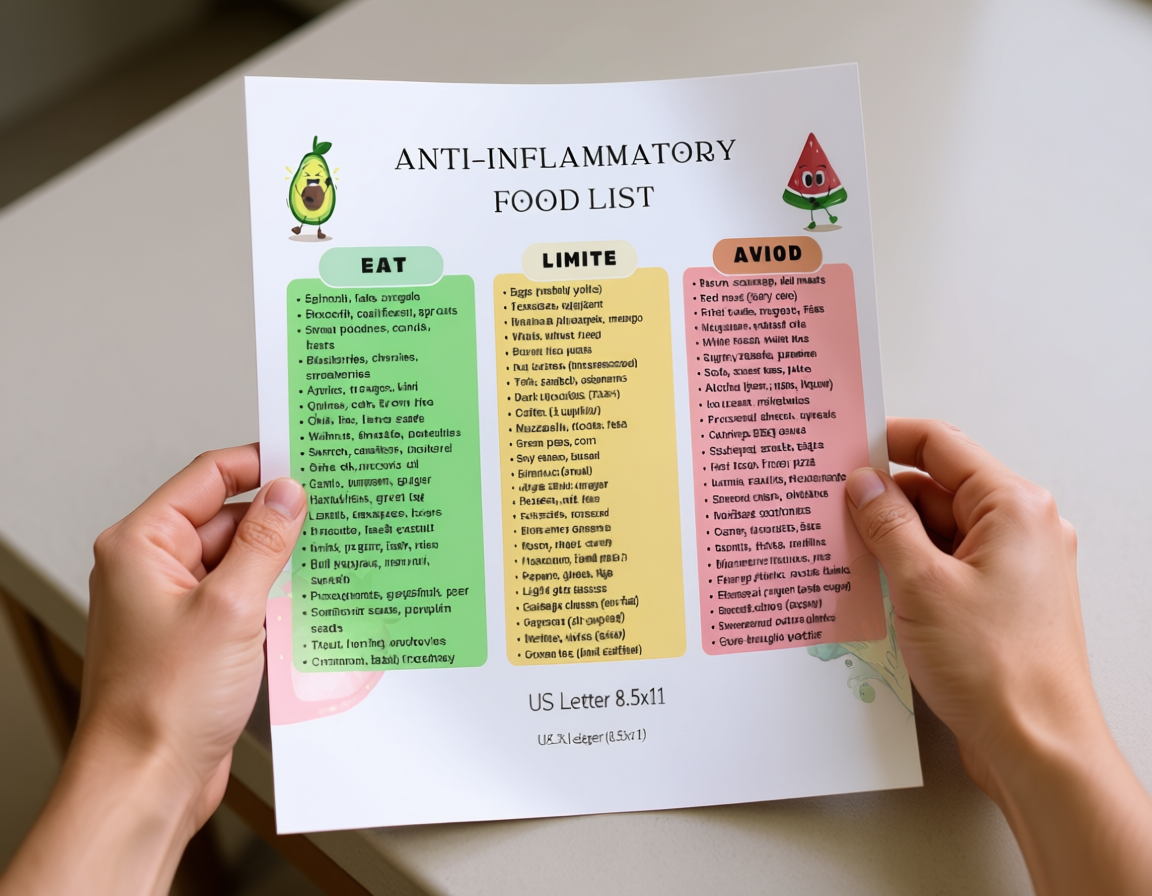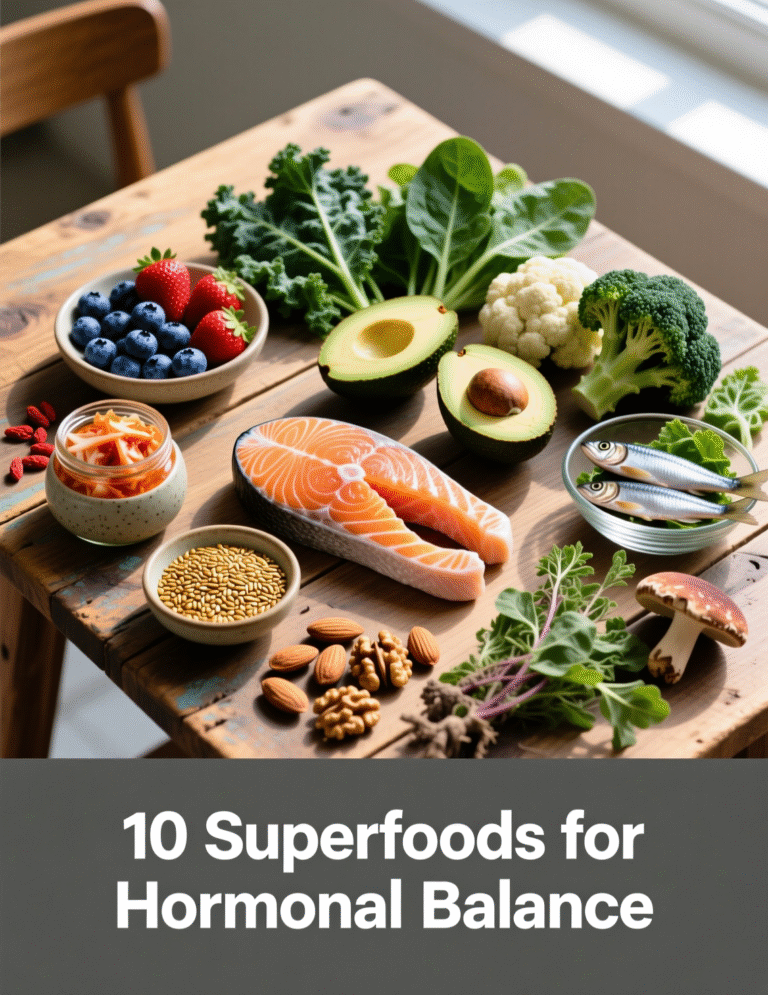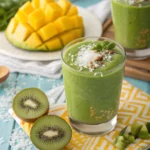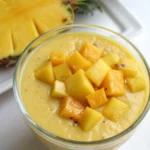Are you searching for natural ways to lower inflammation and boost your health? Adding the right anti-inflammatory foods to your diet can really help. Chronic inflammation is tied to many health problems. While medicine can offer relief, it’s key to tackle it through what you eat too.
Choosing the right foods can help fight inflammation and aid in healing. Our top 20 anti-inflammatory foods list features tasty and healthy options. You can easily add them to your daily meals. By picking the right foods, you can actively manage inflammation and improve your health.
Understanding Inflammation: The Good, The Bad, and The Chronic
To understand how diet affects inflammation, we must first know what inflammation is. It’s a natural response of your immune system, triggered by injury or infection. It aims to protect and heal your body. But, not all inflammation is the same; it can be acute or chronic, with different health impacts.
Acute vs. Chronic Inflammation
Acute inflammation is a short-term response to injury or infection. It’s marked by redness, swelling, and pain. It’s a necessary response that helps your body heal.
Chronic inflammation, however, is a prolonged and persistent condition. It can lead to various health issues, including arthritis, diabetes, and heart disease. Unlike acute inflammation, chronic inflammation can be silent, with no visible symptoms, making it harder to detect.
How Diet Influences Inflammation
Your diet significantly influences inflammation. Eating foods high in processed ingredients, sugar, and unhealthy fats can trigger or worsen chronic inflammation. On the other hand, adding inflammation fighting foods and best foods for reducing inflammation to your diet can help. Foods rich in antioxidants, omega-3 fatty acids, and fiber can reduce inflammation, promoting overall health and well-being.
The Science Behind Anti-Inflammatory Foods
Anti-inflammatory foods have been shown to help heal and prevent chronic inflammation. Adding these foods to your diet can lower your risk of chronic diseases.
Antioxidants and Their Role
Antioxidants fight free radicals, unstable molecules that cause oxidative stress and inflammation. Foods like berries and leafy greens are rich in antioxidants. They protect your cells from damage. A diet full of antioxidants can reduce inflammation and boost your health.
Omega-3 Fatty Acids and Inflammation
Omega-3 fatty acids, especially EPA and DHA in fatty fish, have strong anti-inflammatory effects. These essential fatty acids lower the production of pro-inflammatory molecules. This leads to less inflammation. Research shows omega-3 supplements can ease joint pain and inflammation, improving life for those with chronic conditions.
📌 Free Printable Anti-Inflammatory Foods List

Want to keep these foods handy? I’ve created a free printable list of the top 20 anti-inflammatory foods so you can stick it on your fridge, meal plan with ease, or take it shopping.
👉 [Download Your Free Anti-Inflammatory Foods List (PDF)]
This printable checklist makes it simple to add healing foods into your daily routine without overthinking.
Complete Anti-Inflammatory Foods List for Natural Healing
Knowing which foods fight inflammation can change your health for the better. Adding top anti-inflammatory foods to your meals can cut down on inflammation. This helps improve your overall health and well-being.
How These Foods Fight Inflammation
Anti-inflammatory foods lower the body’s production of harmful substances. Foods rich in antioxidants, like vitamins C and E, and polyphenols, fight off harmful free radicals. Omega-3 fatty acids in fatty fish also help reduce inflammation.
Benefits for Specific Health Conditions
Eating foods that reduce inflammation can greatly benefit your health. It’s especially good for conditions like arthritis, heart disease, and diabetes. These foods can ease symptoms and boost your health.
Colorful Berries and Fruits
Eating a variety of colorful berries and fruits can help fight inflammation. They are full of antioxidants, vitamins, and minerals. These nutrients help reduce inflammation and boost health. Let’s look at some of the best anti-inflammatory berries and fruits for your diet.
1. Blueberries: The Antioxidant Powerhouse
Blueberries are known for their antioxidants, especially anthocyanins. These compounds fight oxidative stress and inflammation. Studies show that eating blueberries can improve heart health and reduce inflammation.
Best Ways to Enjoy Blueberries
Try adding fresh or frozen blueberries to oatmeal, yogurt, or salads. It’s a great way to get more nutrients.
2. Cherries: Nature’s Pain Relievers
Cherries, especially tart ones, are full of anthocyanins. They help reduce inflammation and pain in conditions like arthritis. Research shows that eating cherries can lessen muscle soreness after working out.
3. Strawberries: Vitamin C Champions
Strawberries are packed with vitamin C, a strong antioxidant. They also have ellagic acid, which fights inflammation. Eating strawberries can boost your immune system and lower inflammation.
4. Oranges: Citrus Inflammation Fighters
Oranges are rich in vitamin C and flavonoids, which are anti-inflammatory. The hesperidin in oranges also has anti-inflammatory effects.
“Eating an orange a day can keep inflammation at bay and support overall health.”
Adding these colorful berries and fruits to your diet can help reduce inflammation. They are delicious and support your health. Enjoy them fresh, frozen, or in smoothies for a tasty way to improve your well-being.
Leafy Greens and Cruciferous Vegetables
Adding leafy greens and cruciferous vegetables to your diet can really help. They are full of vitamins, minerals, and antioxidants. These nutrients fight inflammation.
Spinach: The Nutrient-Dense Superstar
Spinach is full of antioxidants and nutrients that fight inflammation. It also has lots of fiber, which is good for your health. You can add spinach to salads, smoothies, or sauté it as a side dish.
Kale: The Inflammation-Fighting Green
Kale is a leafy green with antioxidants and anti-inflammatory properties. It’s easy to use in salads, soups, or as a baked snack.
Broccoli: Sulforaphane-Rich Defender
Broccoli has sulforaphane, a compound that fights inflammation well. It’s also packed with vitamins C and K, making it a great diet addition.
Cooking Methods That Preserve Benefits
To keep the most nutrients, steam or sauté these vegetables. These methods help keep their goodness intact.
Brussels Sprouts: Small but Mighty
Brussels sprouts are full of antioxidants and have anti-inflammatory effects. Roasting or sautéing them makes a tasty and healthy side dish.
Adding these leafy greens and cruciferous vegetables to your diet boosts your anti-inflammatory plan. They give you essential nutrients and help reduce inflammation. This promotes overall health and well-being.
- Key Benefits: Rich in antioxidants, vitamins, and minerals.
- Cooking Tip: Steam or sauté to preserve nutrients.
- Versatility: Can be used in a variety of dishes, from salads to main courses.
Healthy Fats and Omega-3 Sources
Healthy fats, especially those with omega-3 fatty acids, are key in fighting inflammation. They are vital for health and help lower chronic inflammation. Adding omega-3 rich foods and healthy fats to your diet boosts your body’s defenses.
9. Fatty Fish: Salmon, Mackerel, and Sardines
Fatty fish like salmon, mackerel, and sardines are full of omega-3s. They have EPA and DHA, which fight inflammation well. Eating fatty fish twice a week can greatly reduce inflammation.
10. Avocados: Creamy Anti-Inflammatory Fruit
Avocados are tasty and fight inflammation. They’re full of healthy fats and antioxidants. You can easily add them to your diet, in salads, sandwiches, or as a topping.
11. Olive Oil: Mediterranean Liquid Gold
Olive oil is a key part of the Mediterranean diet. It’s known for its anti-inflammatory effects. Its oleocanthal compound is like ibuprofen. Use it for cooking or as a salad dressing.
Choosing and Storing Quality Olive Oil
For the best olive oil, pick high-quality, extra-virgin oil. Store it in a cool, dark place to keep its nutrients.
12. Walnuts: Brain-Boosting Anti-Inflammatory Nuts
Walnuts are great for healthy fats and antioxidants. They have ALA, an omega-3, which fights inflammation and improves heart health. Enjoy them as a snack or in meals for an anti-inflammatory kick.
Powerful Spices and Herbs
Adding the right spices and herbs to your diet can boost your body’s fight against inflammation. These natural ingredients not only make your meals taste better. They also offer strong anti-inflammatory benefits.
13. Turmeric: The Golden Anti-Inflammatory Spice
Turmeric is packed with curcumin, a compound that fights inflammation well. Curcumin has been proven to reduce inflammation and help with various health issues.
Enhancing Curcumin Absorption
To get the most from turmeric, eat it with black pepper. Piperine in black pepper makes curcumin easier to absorb.
14. Ginger: Zingy Inflammation Fighter
Ginger has been used for centuries for its health benefits, including fighting inflammation. It contains gingerol, which has anti-inflammatory effects.
15. Garlic: Allicin-Packed Healer
Garlic is full of allicin, a compound that fights inflammation and boosts health. Eating garlic regularly can help fight chronic inflammation.
16. Cinnamon: Sweet Medicine
Cinnamon is not just tasty in many dishes; it also has anti-inflammatory properties. It can help reduce inflammation and improve insulin sensitivity.
To add these spices and herbs to your diet, try these ideas:
- Add turmeric to soups or curries.
- Use ginger in teas or stir-fries.
- Incorporate garlic into your daily cooking.
- Sprinkle cinnamon on oatmeal or yogurt.
By making these spices and herbs a regular part of your meals, you can enjoy their anti-inflammatory benefits. This can improve your overall health.
Other Potent Anti-Inflammatory Foods
Adding these four foods to your meals can boost your anti-inflammatory diet. They help reduce inflammation and improve your health.
Green Tea: Polyphenol-Rich Beverage
Green tea is packed with polyphenols, which fight inflammation. Drinking green tea regularly can lower inflammation and boost heart health. You can have it hot or cold, with or without sugar, making it easy to add to your diet.
Dark Chocolate: Antioxidant-Rich Treat
Dark chocolate with 70% cocoa or more is full of antioxidants. These help fight inflammation and support heart health. A small piece of dark chocolate each day can be a tasty part of your anti-inflammatory diet.
Tomatoes: Lycopene Powerhouses
Tomatoes are rich in lycopene, an antioxidant that fights inflammation. Cooking tomatoes increases lycopene’s benefits. Tomato sauce and cooked tomatoes are great for your meals.
Mushrooms: Immune-Boosting Fungi
Certain mushrooms, like reishi, shiitake, and oyster mushrooms, have anti-inflammatory properties. They boost your immune system and reduce inflammation. Adding different mushrooms to your meals can make your diet more flavorful and healthy.
By eating these foods, you can lower inflammation and improve your overall health. A varied diet with whole foods is essential for a healthy inflammatory response.
Anti-Inflammatory Foods for Joint Pain Relief
Reducing joint pain naturally is possible by focusing on a diet rich in anti-inflammatory foods. You can alleviate discomfort and improve your quality of life by making informed dietary choices.
How These Foods Target Joint Inflammation
Certain foods have been shown to directly impact joint inflammation. For instance, fatty fish like salmon and sardines are rich in omega-3 fatty acids, which are known to reduce inflammation. Similarly, turmeric contains curcumin, a compound with potent anti-inflammatory properties. Incorporating these foods into your diet can help mitigate joint pain.
Combining Foods for Maximum Benefit
To maximize the anti-inflammatory effects, it’s beneficial to combine various foods. For example, pairing ginger with olive oil can enhance the anti-inflammatory impact. Additionally, a diet rich in berries, leafy greens, and nuts can provide a broad spectrum of antioxidants and anti-inflammatory compounds. Experimenting with different combinations can help you find what works best for your joint health.
Creating Your Anti-Inflammatory Meal Plan
Now that you know about anti-inflammatory foods, it’s time to use them in a meal plan. A meal plan with these foods can help lower inflammation and improve health. By choosing wisely, you can make a diet that’s tasty and good for you.
Breakfast Ideas
Starting your day with anti-inflammatory foods is a great way to begin. Try adding berries and walnuts to your breakfast. Here are some tasty ideas:
- Oatmeal with sliced bananas and walnuts
- Greek yogurt with mixed berries and a sprinkle of turmeric
- Avocado toast on whole-grain bread with a fried egg
Lunch and Dinner Combinations
For lunch and dinner, mix protein with anti-inflammatory veggies and healthy fats. Here are some good examples:
- Grilled salmon with roasted broccoli and quinoa
- Turkey and avocado wrap with mixed greens
- Stir-fry with chicken, bell peppers, and brown rice, seasoned with ginger and turmeric
Healthy Snack Options
Snacks are a chance to add more anti-inflammatory foods to your diet. Try these:
- Raw almonds and dried cherries
- Carrot sticks with hummus
- Dark chocolate squares (at least 70% cocoa)
By adding these foods and ideas to your daily meals, you can make a balanced anti-inflammatory diet. This diet will support your health goals.
Foods to Avoid on an Anti-Inflammatory Diet
An anti-inflammatory diet is not just about what you eat. It’s also about what you avoid. Some foods can make inflammation worse. It’s important to limit or avoid foods that trigger or worsen inflammatory responses.
Processed Foods and Added Sugars
Processed foods and those with added sugars are bad choices. They often have unhealthy fats and sodium. Plus, they have additives that can cause inflammation. Limiting processed and packaged foods can help reduce inflammation.
- Processed meats
- Sugary drinks
- Refined snack foods
Refined Carbs and Unhealthy Fats
Refined carbs and unhealthy fats can also cause inflammation. Foods like white bread and fried foods can raise blood sugar and insulin resistance. Choosing whole grains over refined carbs and healthier fats like nuts and olive oil can help.
- White bread and pasta
- Pastries and baked goods
- Fried foods
Being mindful of these dietary factors can help you follow an anti-inflammatory diet plan. This can potentially reduce inflammation.
Conclusion: Your Journey to Reduced Inflammation
Learning about the right foods can help lower inflammation and boost your health. By focusing on the top 20 anti-inflammatory foods, you’re on your way to feeling better.
Start by adding colorful berries, leafy greens, and healthy fats to your meals. Try using spices like turmeric and ginger for flavor and health benefits. Avoid processed foods and sugars, as they can cause inflammation.
Creating a balanced meal plan with anti-inflammatory foods is easy and tasty. Start today and see the positive effects of less inflammation. By choosing the right foods, you can control your health and feel great.
FAQ
What are anti-inflammatory foods?
Anti-inflammatory foods help reduce body inflammation. They are full of antioxidants, omega-3 fatty acids, and nutrients that aid healing and health.
How do anti-inflammatory foods help with joint pain?
These foods ease joint pain by fighting inflammation and healing. Omega-3 fatty acids in fatty fish and antioxidants in berries are especially helpful.
Can I follow an anti-inflammatory diet for other health conditions?
Yes, an anti-inflammatory diet helps with more than just joint pain. It’s good for heart disease, diabetes, and mental health by lowering inflammation.
What are some examples of anti-inflammatory foods?
Foods like spinach, kale, fatty fish, berries, nuts, and seeds are great. Spices like turmeric and ginger also help reduce inflammation.
Are there any foods I should avoid on an anti-inflammatory diet?
Yes, avoid processed foods, added sugars, refined carbs, and unhealthy fats. They can make inflammation worse.
How can I incorporate anti-inflammatory foods into my diet?
Add colorful fruits and veggies, whole grains, lean proteins, and healthy fats to your meals. Try new recipes with anti-inflammatory ingredients.
Can cooking methods affect the anti-inflammatory benefits of foods?
Yes, cooking methods like steaming or grilling keep nutrients and benefits. But deep-frying can lose these benefits.
Are there any anti-inflammatory recipes I can try?
Yes, there are tasty recipes like salads, grilled fish, and stir-fries with turmeric and ginger. They’re easy to make and packed with benefits.
How long does it take to see the benefits of an anti-inflammatory diet?
Benefits vary based on health and diet changes. Some see improvements in weeks, while others may take longer.
Can an anti-inflammatory diet be combined with other treatments for chronic inflammation?
Yes, an anti-inflammatory diet can support other treatments like medication or physical therapy. Always consult a healthcare professional.





